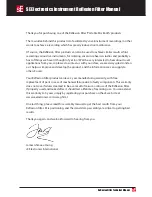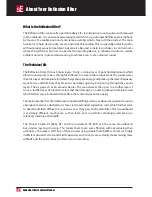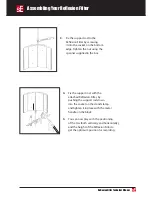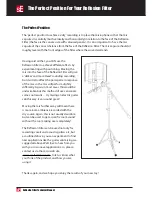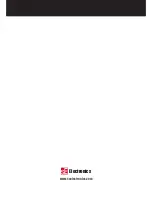
Reflexion Filter Technical Manual
About Your Reflexion Filter
What is the Reflexion Filter?
The Reflexion Filter is basically a portable device for recording live sound sources with reduced
room ambience. It is an advanced composite wall which is positioned behind any microphone
by means of a variable position stand clamp assembly which ships with the product. The main
function is to help obtain a ’dry’ vocal or instrument recording. This is especially useful in studios
without proper acoustic treatment, but can also be used to help record takes in control rooms
where the performer also has to operate the recording device, in rehearsal studios to reduce
ambient noise’ or in pro studios wanting to achieve a less ‘room coloured’ sound.
The Technical Bit:
The Reflexion Filter Pro has 6 main layers. Firstly, a strong layer of punched Aluminium which
allows sound waves to pass through it, diffused, to a layer of absorptive wool. The sound waves
then hit a layer of Aluminium foil which helps dissipate energy and break up the lower frequency
wave-forms, and from here they hit an air space kept open by rods passing through the various
layers. The air gap acts as an acoustic barrier. The sound waves then pass to a further layer of
wool, a further layer of Aluminium foil, and then through an outer, punched, Aluminium wall
which further serve to absorb then diffuse the remaining acoustic energy.
The main absorber has 4 formed pieces of patented ‘Polyester Acoustiboard’, a specialist acoustic
absorptive material, attached to its face via the extended separation rods, which further serve
to absorb and then diffuse the sound waves as they pass to the main filter. This Acoustiboard
is extremely efficient, much more so than foam, and so performs amazingly well even in a
relatively small area and depth.
The Project Studio RF (Baby RF) and the Instrument RF (IRF) use the same Acoustiboard,
but simpler layering structure. This makes them more cost effective, without reducing their
usefulness. The same is NOT true of cheap copies using simple foam baffles as foam is a highly
inefficient absorber at low and mid frequencies, and in most cases actually makes mixing more
difficult, and the end product is often a worse recording.


